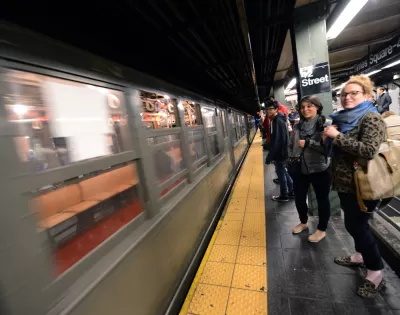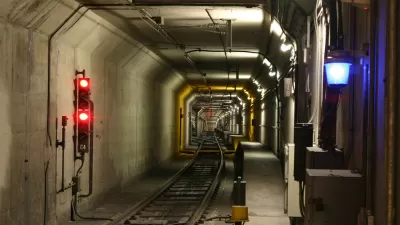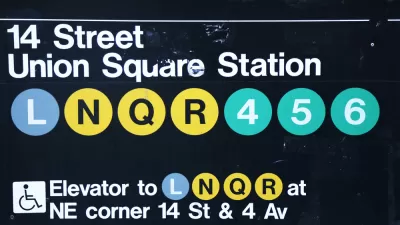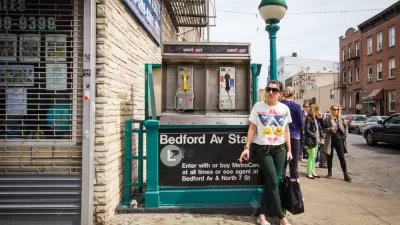An investigative report digs into the causes of delays on the New York subway and finds that the official company line might not square with reality.

Aaron Gordon releases a bombshell investigative report on delays on the New York subway, and the great lengths it seems the New York MTA has gone to cover up or avoid the real causes of the issue.
Gordon begins by explaining the MTA's long abused scapegoat for system delays: "a catchall category blandly titled 'insufficient capacity, excess dwell, unknown,' which captures every delay without an obvious cause. According to Gordon that category "is where the other primary MTA narrative developed, that of 'overcrowding': Historically high ridership has resulted in crowds that are keeping trains in stations longer."
But Gordon has found ample evidence to doubt overcrowding as the persistent reason for subway delays in New York, including, but not limited to, the fact that "overcrowding" delays have continued to increase even as ridership has decreased.
As for what is causing the delays, Gordon says the MTA had the real culprit under its nose in a report produced in 2014 but never released to the public. According to the article, the MTA slowed all the trains down after a train collision in 1995. According to Gordon, "the MTA, quite literally, slowed all the trains down, issuing a bulletin informing employees in April 1996 that their propulsion systems would be modified so they could achieve a maximum speed of 40 miles per hour, down from the previous high of 50 to 55 miles per hour on a flat grade."
There were other speed limits built into the system, including modified signals that would trip the speed of trains if they were traveling over a certain speed, requiring a restart process of duration anywhere from one to ten minutes long. An unpublished 2014 study, reported for the first time here by Gordon, "found 2,851 lost total passenger hours per weekday could be attributed to thirteen modified signals alone."
The article should be considered a long read, so there's a lot more detail, evidence, and commentary provided.
FULL STORY: ‘The Trains Are Slower Because They Slowed the Trains Down’

Planetizen Federal Action Tracker
A weekly monitor of how Trump’s orders and actions are impacting planners and planning in America.

Congressman Proposes Bill to Rename DC Metro “Trump Train”
The Make Autorail Great Again Act would withhold federal funding to the system until the Washington Metropolitan Area Transit Authority (WMATA), rebrands as the Washington Metropolitan Authority for Greater Access (WMAGA).

DARTSpace Platform Streamlines Dallas TOD Application Process
The Dallas transit agency hopes a shorter permitting timeline will boost transit-oriented development around rail stations.

Renters Now Outnumber Homeowners in Over 200 US Suburbs
High housing costs in city centers and the new-found flexibility offered by remote work are pushing more renters to suburban areas.

The Tiny, Adorable $7,000 Car Turning Japan Onto EVs
The single seat Mibot charges from a regular plug as quickly as an iPad, and is about half the price of an average EV.

Supreme Court Ruling in Pipeline Case Guts Federal Environmental Law
The decision limits the scope of a federal law that mandates extensive environmental impact reviews of energy, infrastructure, and transportation projects.
Urban Design for Planners 1: Software Tools
This six-course series explores essential urban design concepts using open source software and equips planners with the tools they need to participate fully in the urban design process.
Planning for Universal Design
Learn the tools for implementing Universal Design in planning regulations.
Municipality of Princeton
Roanoke Valley-Alleghany Regional Commission
City of Mt Shasta
City of Camden Redevelopment Agency
City of Astoria
Transportation Research & Education Center (TREC) at Portland State University
US High Speed Rail Association
City of Camden Redevelopment Agency
Municipality of Princeton (NJ)





























